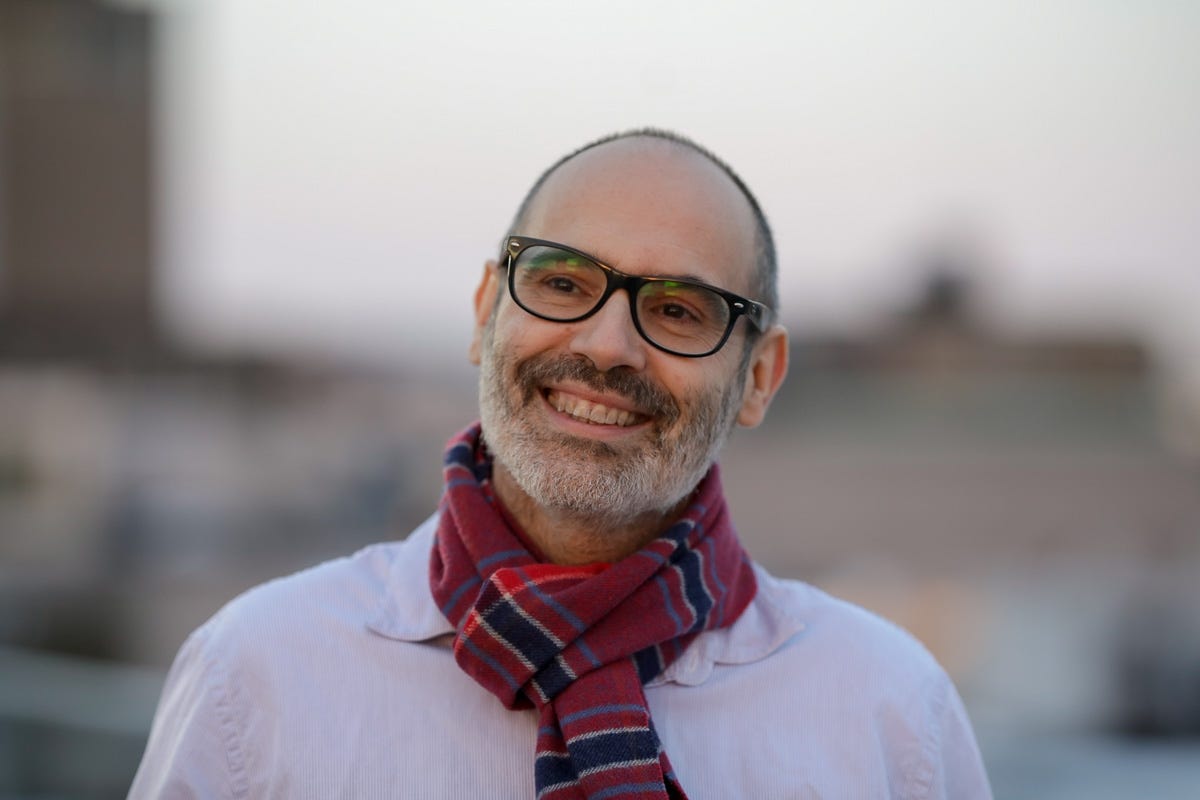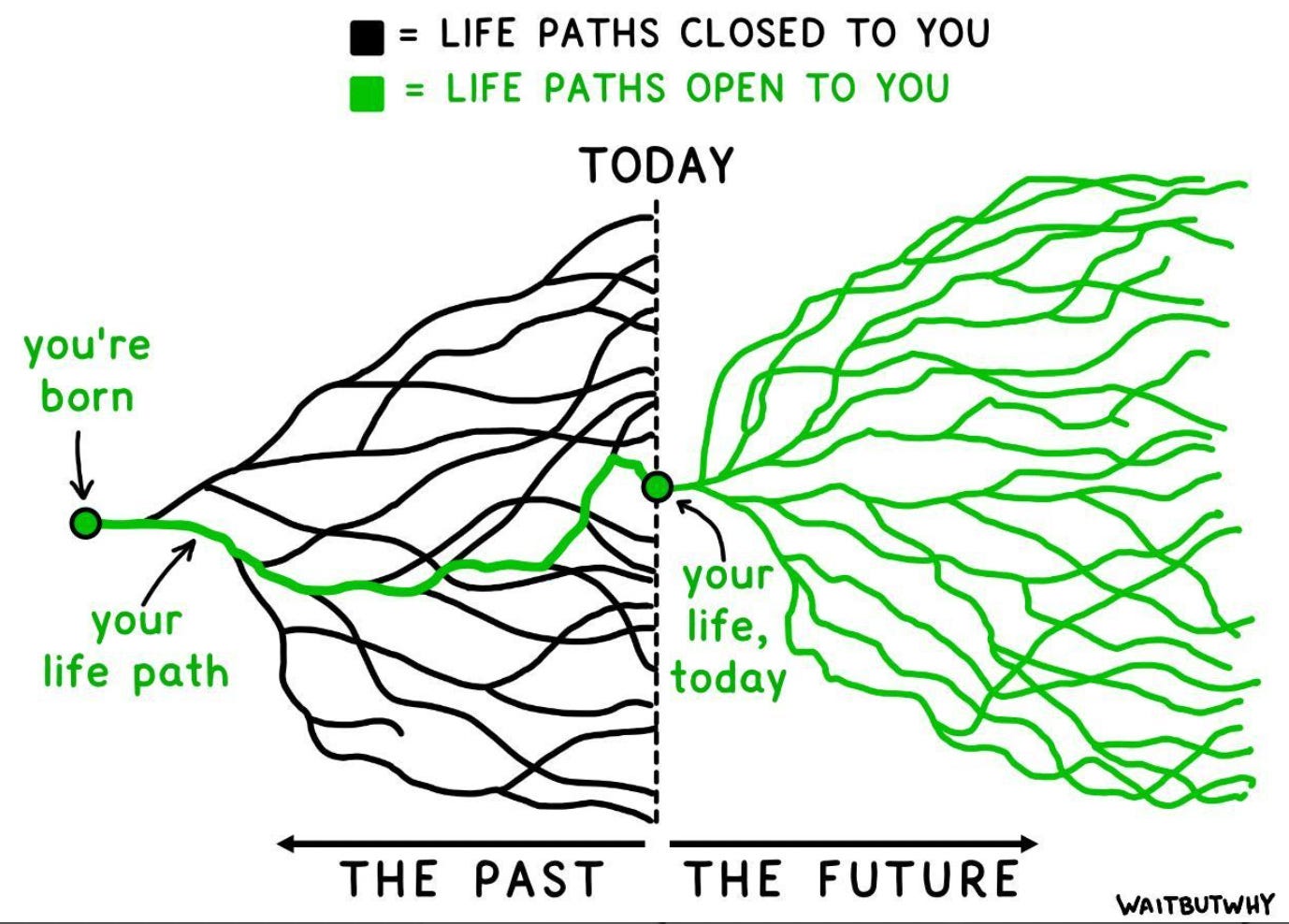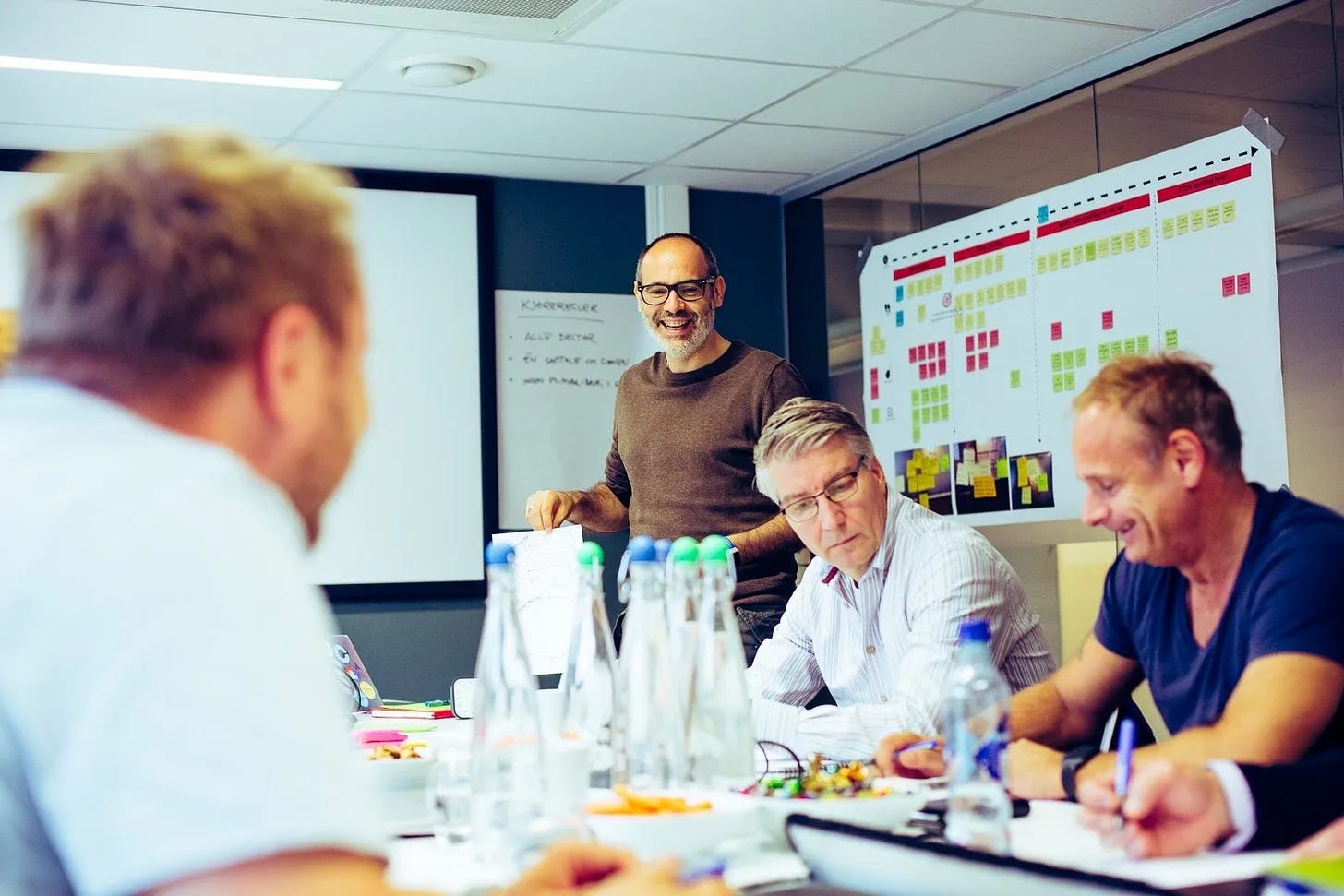From Hesitation to Breakthrough: Navigating the Emotional Journey of Workshop Participants
A practical guide with checklists and tips to turn uncertainty, tension, and awkwardness into insights, engagement, and lasting impact.

When we think about workshops, we often focus on the tools, the methods, and the outcomes. But underneath the sticky notes and frameworks lies a powerful, often invisible current: the emotional journey of participants. Understanding this journey is essential if we want our workshops to create lasting impact.
Workshops are not just about ideas—they’re about people. And people bring their emotions, assumptions, fears, and hopes into the room. If you can anticipate these emotional phases and actively guide participants through them, you’ll create safer, more engaging, and more productive experiences.
Below, I outline the five key emotional phases participants often go through in a workshop, the pitfalls to watch out for, and a practical checklist of facilitator strategies you can apply in real time.
1. The Arrival: Hesitation and Curiosity
What happens:
Participants walk into the room with mixed feelings—some are curious, others skeptical, and a few might be resistant (“Why am I here?”). There’s uncertainty about what will happen, how much they’ll need to contribute, and whether their voice will be valued.
Pitfall:
If this initial unease isn’t acknowledged, it can grow into disengagement. Participants might hold back, waiting for others to take the lead.
Facilitator’s role:
Create a warm welcome and set the tone with clarity and openness.
Acknowledge the uncertainty—naming it reduces its power.
Use light, inclusive icebreakers to ease people into participation.
✅ Checklist for Arrival
Greet participants personally as they enter.
Explain the purpose of the workshop in plain, human terms.
Do a check-in round (“one word on how you’re arriving today”).
Make the room feel inviting: music, visuals, seating arrangement.
💡 Quick Tip: Show vulnerability yourself—if you acknowledge that starting can feel awkward, participants will feel permission to be real too.
2. The Dive: Awkwardness and Adjustment
What happens:
Once the activities begin, participants are asked to step outside their comfort zone—brainstorming, collaborating, or sharing ideas openly. This can feel awkward, especially if the group isn’t used to working this way.
Pitfall:
People may revert to familiar behaviors: dominating discussions, staying silent, or becoming overly critical. The fear of looking “wrong” or “silly” can limit creativity.
Facilitator’s role:
Provide clear, step-by-step instructions.
Normalize awkwardness: “It’s okay if this feels unusual at first.”
Use structured activities that give everyone a voice.
✅ Checklist for the Dive
Give very concrete instructions and repeat them if needed.
Offer short, time-bound exercises to lower the pressure.
Encourage equal contribution (e.g., use rounds or pair-shares).
Reassure participants that all ideas are welcome.
💡 Quick Tip: Silence can be powerful—don’t rush to fill it. Give participants time to think before they speak.
3. The Tension: Resistance and Frustration
What happens:
Workshops often hit a natural low point when ideas clash, decisions stall, or energy dips. Participants may feel frustration (“This isn’t working”) or resistance (“Why are we doing this?”).
Pitfall:
If tension is ignored, it can spiral into cynicism or disengagement. Some participants may emotionally check out.
Facilitator’s role:
Treat tension as a normal part of progress.
Encourage constructive dialogue, not debate.
Use energizers or breaks to reset the group.
✅ Checklist for Managing Tension
Name the tension in the room without judgment.
Ask reflective questions: “What feels stuck right now?”
Encourage active listening—repeat back what you hear.
Insert a short stretch, walk, or energizer.
💡 Quick Tip: Acknowledge emotions, not just logic. Sometimes a simple “I can sense some frustration—let’s pause and unpack that” is enough to re-engage people.
4. The Breakthrough: Discovery and Flow
What happens:
After wrestling with the challenge, a breakthrough emerges—an insight, a solution, or simply a shared understanding. The group feels energized, collaborative, and “in flow.”
Pitfall:
Without guidance, breakthroughs can be fleeting. Participants might get carried away with excitement but lose track of focus or feasibility.
Facilitator’s role:
Capture insights visibly so they don’t get lost.
Reinforce the group’s achievement—celebrate the shift.
Channel the energy into structured next steps.
✅ Checklist for Breakthrough Moments
Capture insights in real time (whiteboards, sticky notes, digital tools).
Summarize key takeaways out loud so everyone hears them.
Acknowledge the emotional shift: “We just had a breakthrough here.”
Transition energy into a concrete plan (“So what do we do with this?”).
💡 Quick Tip: Use your body language—when energy rises, step back and let participants shine.
5. The Landing: Reflection and Closure
What happens:
As the workshop nears its end, participants start thinking about what comes next. There can be pride in the work done, but also doubt: “Will this actually lead to change?”
Pitfall:
If closure is rushed, participants may leave without clarity or commitment. The energy dissipates, and outcomes risk being forgotten.
Facilitator’s role:
Allow time for reflection and emotional check-out.
Define clear next steps and ownership.
End on a positive, grounded note.
✅ Checklist for Closure
Run a reflection round (“What’s one thing you’re taking with you?”).
Summarize key decisions and next actions.
Assign ownership where needed (who does what, by when).
Close with gratitude or appreciation.
💡 Quick Tip: Don’t skip the emotional check-out—how people feel when they leave is as important as what they know.
Why This Journey Matters
Workshops are emotional as much as intellectual. When facilitators acknowledge and guide participants through this journey—from hesitation to discovery to closure—they create not just outputs, but meaningful experiences that stick.
In the end, the success of a workshop isn’t measured only by the ideas generated, but by how participants felt along the way—and whether they’re motivated to carry the outcomes forward.
👉 Facilitator’s takeaway:
Think of yourself not only as a designer of activities but as a steward of emotions. If you can anticipate these phases and meet participants where they are, you’ll transform workshops from mechanical exercises into powerful collective experiences.
I hope this post, made sense and you found it useful.
If “HELL YEAH!”, please like it and share it in social media so more people can get can also benefit from it :-)
I would also appreciate if you subscribe, and give some comments here if you wonder something and want to give me some feedback. I would love to read your input here!
If you have a Substack yourself and like my content, I would love for you to recommend “Facili-station” to your subscribers.
Have a nice one!!
Looking for a coach?
In service of those who serve others.
Leadership is hard. Whether you’re stepping into management, leading an entire organization or wondering about your career, the challenges are real: confusing, overwhelming, and sometimes isolating.
I offer a tailored 1:1 or team coaching quarterly program to help you move forward with clarity and confidence. I’ve walked in your shoes, and I’ll work with you to build the resilience and relational skills needed to lead well, beyond just the work.
If this sounds like what you need, let’s talk. Email me at jose@facilistation.com to book a no-strings attached, no-obligation call to talk about your needs and see what I can offer that will fit you the best. Because coaching isn’t expensive. Staying stuck is.
You should see the cost of a life and work that you don’t love... sometimes one good conversation can change your life and your career forever.
Looking for a facilitator and workshop designer?
If you need a workshop designer and facilitator to help you or your team to solve challenges, find solutions, make decisions, and to be more effective an perform better and faster, or a trainer to teach your team on how do this, please contact me at jose@facilistation.com
My workshops are designed to provide the structure required to quickly align and move forward with a plan or idea so you can reclaim time, energy and headspace.




